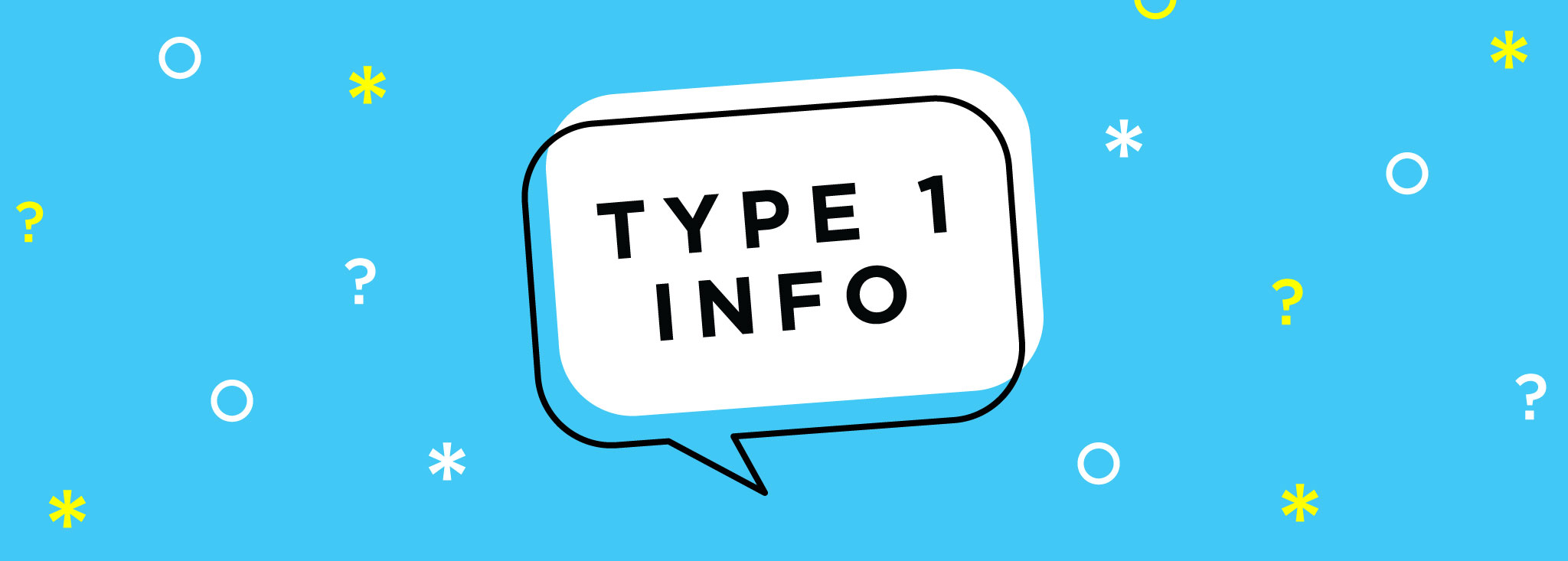What is Type 1 diabetes?
This page gives a rundown on type 1 diabetes (T1D). For more in-depth resources on T1D, please visit our sister site, Beyond Type 1.
What is Type 1 diabetes?
Type 1 diabetes, formerly known as juvenile diabetes, is a chronic autoimmune condition that makes the body unable to produce insulin, the hormone that regulates blood sugar. Without insulin, our bodies cannot use the sugar in our bloodstream as energy, causing people to experience diabetic ketoacidosis (DKA).
What are the symptoms of Type 1 diabetes?
There are many signs or symptoms that can be present when someone has undiagnosed or untreated diabetes. Here are a few of these symptoms:
- Unquenchable thirst
- Frequent urination
- Unexplained bedwetting
- Unwanted or unexplained weight loss
- Less energy
- Fruity smelling breath
- Blurry vision
- Stomach pain
- Nausea or vomiting
- Loss of consciousness
- Rapid, heavy breathing
Learn about the warning signs of T1D.
How does Type 1 diabetes affect the body?
The body’s immune system attacks itself, much like celiac disease. Specifically, it attacks the insulin-producing beta cells in the pancreas, also known as islet cells. Over time, these cells are destroyed and the pancreas can’t produce insulin. Insulin allows the body to use glucose in the blood as energy. It acts as a key that unlocks the body’s cells, allowing glucose to enter and be absorbed. Without insulin, it breaks down bodily tissue such as muscle and fat stores. A potentially fatal consequence for people with this disease who aren’t on insulin therapy is diabetic ketoacidosis (DKA). DKA occurs when there is an overload of glucose in the bloodstream because there is no regulating insulin.
What causes Type 1?
T1D is neither preventable nor curable. While its cause is unknown, studies suggest that T1D results from a genetic predisposition, typically combined with an environmental trigger.
How do you manage it?
Living with T1D is a full-time balancing act. It requires constant attention to avoid acute, life-threatening hypoglycemia (low blood sugar) or the long-term damage done by hyperglycemia (high blood sugar). Blood sugar levels must be monitored either with finger pricks or a continuous glucose monitor. Insulin doses must be carefully calculated based on activity, food and additional factors. This can be an emotional and mental burden for both patients and caregivers.
There are two main types of diabetes:
- Type 1 diabetes (T1D) is an incurable, autoimmune disease, not a lifestyle disease. T1D accounts for roughly 10 percent of the more than 420 million global cases of diabetes and people with type 1 are insulin-dependent for life.
- Type 2 diabetes (T2D) occurs when the body cannot properly use insulin, also known as “insulin resistance,” and can often be treated through diet, exercise and medication.




